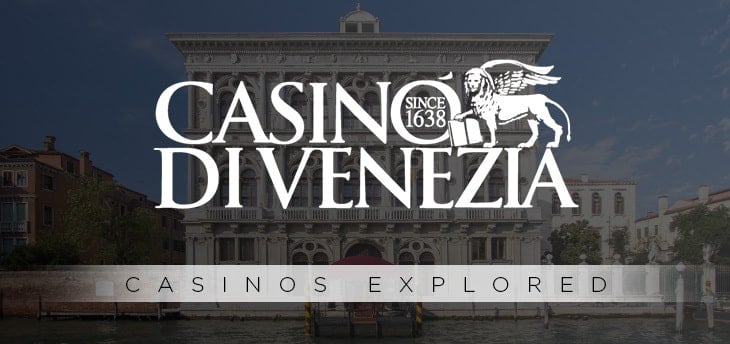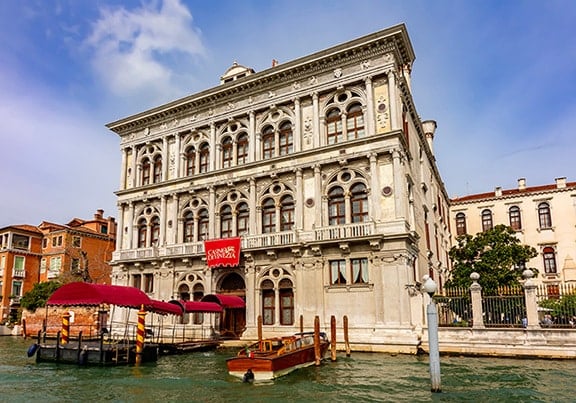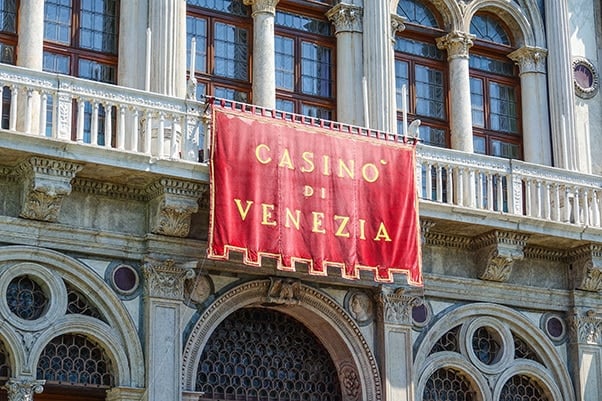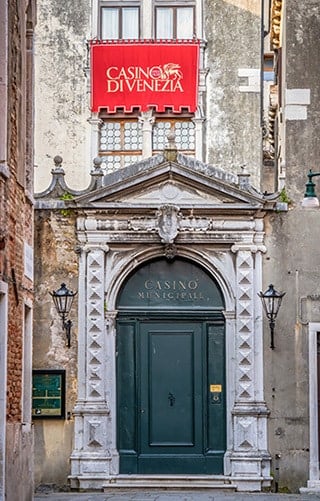Casinos Explored – Casino di Venezia

If you were asked to name the world’s oldest casino, what would be your answer? One of Vegas’ mega-resorts like the Bellagio and the Wynn? One with more historical significance, like Monaco’s Monte Carlo? Truth is, none of those are correct.
The record-holding establishment hails from Venice, which is only natural considering Italy was the birthplace of casinos. “Casino” itself is even an Italian word, coming from the word casa or house.
Today, we’ll dive into the rich history of the world’s oldest casino: The 385-year-old (at the time of writing this) Casino di Venezia. We’ll explore its origins, historical connections, and the new additions that allow it to thrive even in the present day.
Casino Overview
Overlooking the Grand Canal, the Casino di Venezia holds the record for being the oldest casino in the world. Its 385-year history dates back to the Italian Renaissance, having been designed by a Renaissance architect and decorated by famous painters.
Even when gambling was temporarily outlawed, the building has been home to nobles and royals alike. One of its most famous inhabitants was the composer Richard Wagner; after his death, his legacy was immortalized through various additions to the building.
The casino itself is a massive, three-story complex offering all manner of games. Slots are the main attraction, with over 600 machines spread across two rooms. Traditional table games like blackjack, roulette, poker, and punto banco are also present.
Other attractions include a hidden garden overlooking the Grand Canal, and a free shuttle service that goes from the Mestre Railway to the casino.

The 1500’s: Laying the Groundwork
The building that would house the Casino di Venezia was originally built in the 15th century by Andrea Loredan. Being a wealthy Italian nobleman and art collector, Loredan wanted only the best for the building.
He hired the famous architect Mauro Codussi, who designed many of Venice’s famous churches. The three-story complex was adorned with paintings and frescoes from famous artists like Mattia Bortoloni, Palma il Giovane, and Gian Battista Crosato.
The palace was known as “Ca ‘Vendramin Calergi.” Construction finished in 1509, and the building became a shining example of Renaissance architecture. Many of the paintings are still visible today, a testament to their timelessness.
1638: The Theatre Saint Moses
The building was originally constructed to hold the Theatre Saint Moses, which opened in 1638. The theatre also held another wing, used for gambling in between performance breaks. That small wing was the earliest ancestor of the Casino di Venezia, and it was the beginning of a countrywide gambling craze.
The wing was essentially exclusive to wealthy nobles due to its high stakes and dress code. It saw visits from famous philosophers, adventurers, and more, becoming incredibly famous throughout the country.
This fame inevitably attracted imitations. More and more new establishments started appearing, introducing the very concept of casinos to the government, which had no laws concerning gambling. They then decided to start regulating and taxing the rapidly-growing industry. By 1744, there were more than 120 casinos nationwide.

1774 – 1946: A 200 Year Drought
Unfortunately, the government’s view on gambling rapidly changed and by 1774, gambling was banned nationwide, forcing the casino to close its doors.
After ceasing its casino operations, the palace bounced back and forth between owners. It was purchased by the Italian king, serving as a home for the royal family. In 1858, it became a getaway spot for famous composer Richard Wagner. He spent so much time there that it was ultimately where he died in 1883.
Eventually, the building was purchased by the state in 1946. It was renovated and reinstated as a casino, opening its doors in 1959 after the gambling ban was lifted. This renovation also came with a name change, giving it the iconic title of the Casino di Venezia.
1959: The Casino di Venezia
Two centuries later, gambling was the establishment’s main attraction. The theater was shut down, and the casino was attracting visitors from far and wide. With all three floors transformed into gambling halls, the Casino could hold several times more people.
Over the years, the building has seen a few new additions and expansions. Most of them honor Richard Wagner, preserving the composer’s legacy and connection with Venice. There’s the Wagner Museum which opened in 1995, a memorial plaque adjacent to the building, and even a Wagner-themed restaurant.

1999: The Ca’ Noghera
In 1999, Venice’s second casino was built near the Marco Polo airport. A sister property of the Casino di Venezia, it’s known as the Casino di Venezia: Ca’ Noghera.
Unlike the main venue, the Ca’ Noghera isn’t a rich, historical monument. Instead, it’s Italy’s first American-style casino. With cutting-edge technology and American games like roulette and Caribbean poker, the Ca’ Noghera is the modern side of the Casino di Venezia coin.
Present Day
With such a rich history, it’s no surprise that the Casino di Venezia remains an important cultural hub. It’s a popular celebrity destination, hosting names like Claire Danes and Coolio.
The casino has also been the venue for famous events like the Venice Film Festival. One of the biggest events held there was the World Poker Tour (WPT) Venice Grand Prix was held in 2011 and was won by Rinat Bogdanov.
GGPoker stands out as a premier online poker destination for players looking to climb the ranks, compete in high-stakes tournaments, or simply enjoy a game of skill. From multi-table poker tournaments to daily cash games, the platform caters to a wide spectrum of players. Ambitious grinders can aim for a WSOP bracelet or WSOP Circuit ring, while newer players can start with free poker games and learn at the GGPoker School. Innovative tools like PokerCraft, Smart HUD, and staking options give every player an edge as they refine strategies, explore new poker formats, and chase big prizes.





